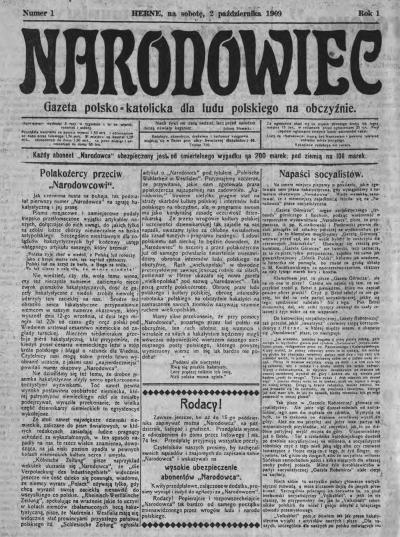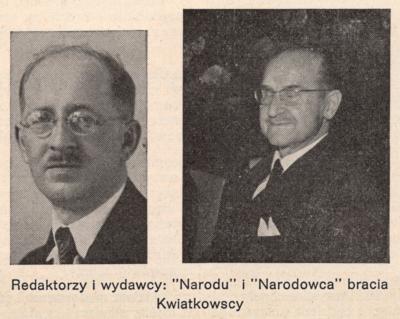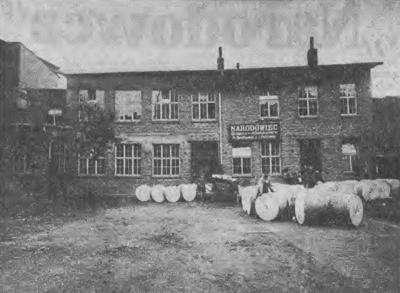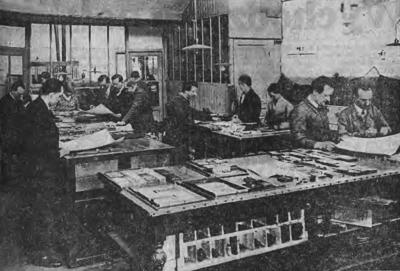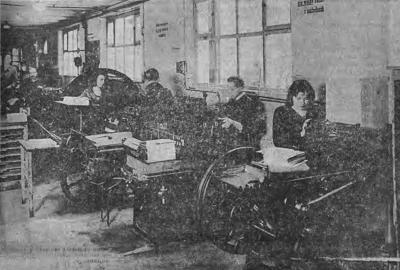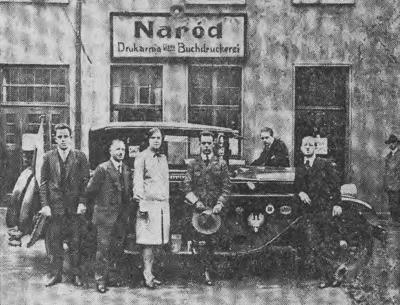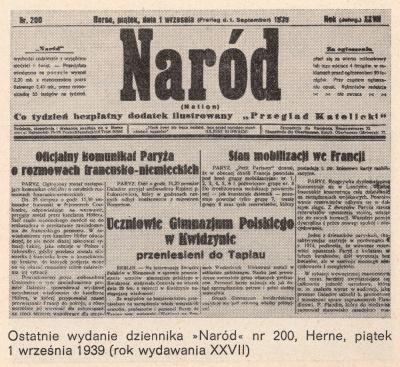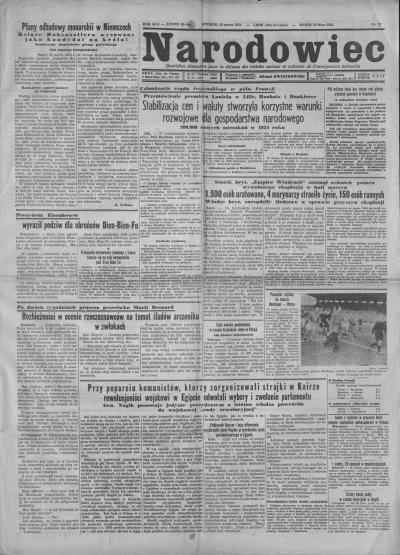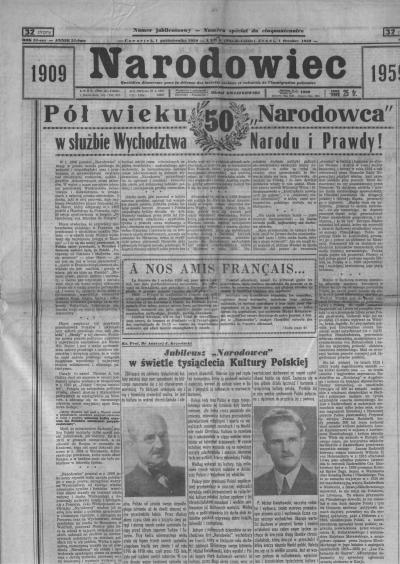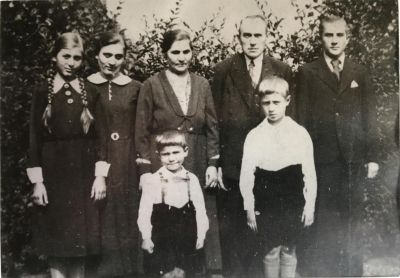The “Narodowiec” – a Polish national newspaper in the Ruhr area

Poles, who didn’t have a strong class consciousness as workers, but who had become workers in the Ruhrgebiet as a result of their social position on the production line, or those who weren’t prepared to subordinate this to the national sentiment, considered themselves to be represented by the “Narodowiec”. The fact that this constituted a remarkable number of people was reflected in the high circulation figures, equal to those of the “Wiarus Polski”, and in the election of known representatives and followers of the “Narodowiec”, as well as those of the “Wiarus Polski”, into the committees of the central and regional associations of Polish organisations. For example, Michał Kwiatkowski, the publisher of the “Narodowiec”, and Jan Brejski, the publisher of the “Wiarus Polski”, were members of the Ruhr Poles’ most important political body shortly before the First World War, the Komitet Wykonawczy (Implementing Body), that saw itself as the representative of all Polish associations in the Ruhrgebiet, as well as being members of the Westphalian leadership of Towarzystwo Czytelni Ludowych (Association of Public Libraries) which played an important role in the dissemination and consolidation of the Polish language and culture “in foreign lands”.
The “Narodowiec”, which, like most opposition newspapers, was briefly banned at the beginning of the First World War, also adhered to the Burgfrieden demanded by the Kaiser during the war, as did all the political forces in the German Reich, except for the subsequent spartacist-communist, independent-socialist and anarchist-syndicalist groups. This meant the Polish fraction in the Reichstag, which at this time was recognised by nearly all Polish national organisations as their representative in the Reich, agreeing to approve the war loans, as well as agreeing that no political initiatives or other initiatives would be taken during the war to change existing laws or against political decisions made by the government of the Kaiser. However, a few months before the end of the war when the reconstitution of the Polish state was emerging as an outcome of the war, this Burgfrieden was no longer being followed in full. In a public declaration in April 1918, the “Narodowiec”, together with most of the Polish organisations “in foreign lands”, protested against the peace agreement of the German Reich with the People’s Republic of the Ukraine, since this alleged Polish home territory, agreed upon by the Germans, had been conceded as part of its state territory. In a second, considerably more controversial public declaration in October 1918, more or less the same group demanded that the former Polish regions - the Poznań regions, parts of Pomerania, West and East Prussia and Silesia - that at that time belonged to Prussia, would have to be conceded to the future new Poland that was emerging.
As the new Polish state, the Republic of Poland, began to come into existence from November 1918, the “Narodowiec”, just like the other Polish national organisations and newspapers, called for people to return to Poland. How the Germans organised their state was their business. At the same time, it stressed again and again the unity of the Polish nation. Michał Kwiatkowski, the editor-in-chief of the “Narodowiec”, who had already relocated to Poland in 1919 but who retained his influence on the “Narodowiec”, supported the Christian Democrats there and became one of their elected representatives in Polish Sejm from 1922 to 1927. However, whilst the “Wiarus Polski” made quite specific demands for the structure of the new Polish state, such as the acceptance of the comprehensive workers’ rights fought for by the workers in Germany, the separation of church and state, the subordination of the religious power interests embodied by the institutional Catholic church to the workers’ interests in the event of conflict, and continued to accept class-struggle methods in societal conflicts, this was countered by the “Narodowiec”. It rejected all demands made of the new state, saying that first the relevant constitutional bodies had to be elected. They were the only ones authorised to define the societal framework. At the same time, however, it consistently referred to the Sozialenzyklika of the Catholic church, “Rerum Nowarum”, thereby accepting the societal solidarity laid down there as the only legitimate form of political action. Moreover, it ascribed a leading moral role in the state to the Catholic church. The political differences found their expression, for example, in the attitude towards the contested land reform in Poland which the “Narodowiec” also considered necessary, and thus affiliated with the attitude towards the nobility and the elite. Whilst the “Wiarus Polski” campaigned for a consistent land reform with a more symbolic restitution, the “Narodowiec” spoke up for a moderate reform with material restitution for the large landowners and the nobility to be borne by the farmers to the value of the expropriated land. The latter distinguished it from the national democrats who wanted to keep a land reform as small as possible and, if at all possible, to restrict it to public lands. The “Narodowiec” also showed restraint when it came to the rights of the various ethnic populations in the new Poland. This was in stark contrast to the “Wiarus Polski” that called for equal rights for ethnic groups.
